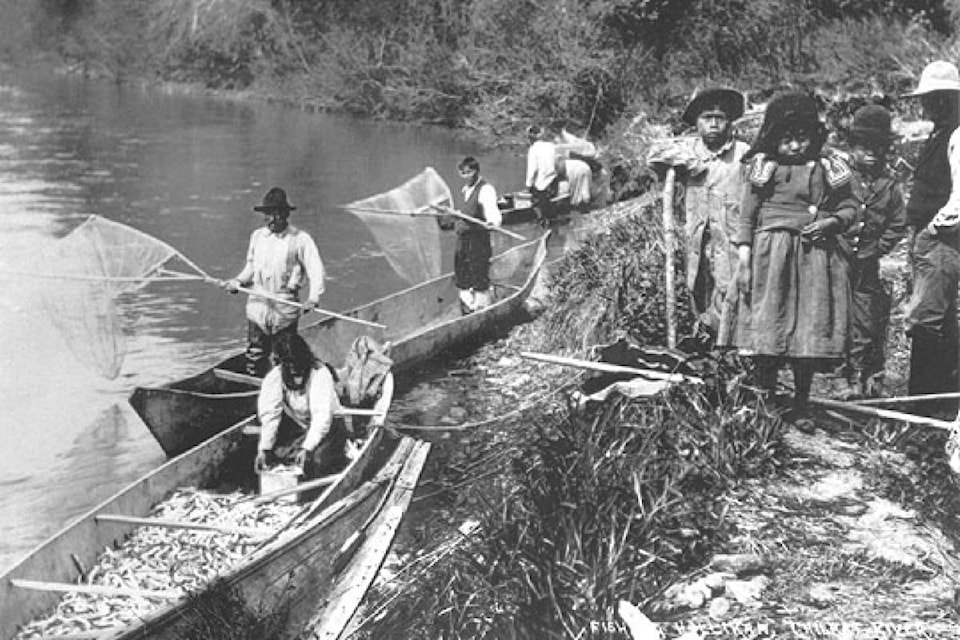By Nancy Demwell, Delta Museum and Archives Society
The eulachon is a small variety of smelt, whose numbers at one time turned the Fraser River black when they spawned up the river in early April. They would lay their spawn on sandbars and gravel beds, beginning at where the Port Mann Bridge now exists and up to Chilliwack.
Each community along the river would celebrate their arrival. Radio stations announced the arrival of the eulachon run, and kids and their parents grabbed their pails, buckets and dip nets to scoop up eulachons at the riverside. It was a lot of fun and was followed by a tasty plate of the fried eulachons.
Indigenous peoples called the eulachon Salvation Fish because it was the first spawning fish in the spring, and for some First Nations it was salvation from starvation after a long winter. On the north and central coast, the eulachon was caught and processed for its grease, which was traded with peoples from the Interior. Alexander Mackenzie, the first European explorer to cross North America from east to west north of Mexico, followed the traditional “Grease Trails” to the coast from B.C.’s Interior.
For the Kwantlen and other south coast First Nations, the eulachon was caught to be eaten fresh or dried. Sometimes called “candle fish” because it contained so much fat, it was said that a wick could be stuffed in a dried eulachon’s mouth and the fish could be used as a candle.
The eulachon was fished commercially on the Fraser since the 1870s. They were processed into fish meal for fertilizer, and later provided food for fur farms such as the mink farm in Annieville (now North Delta). Unlike the salmon, halibut or herring fisheries, the eulachon fishery was not regulated and it came as a surprise when, beginning in 1945, the eulachon run steeply declined, and eventually didn’t return to spawn in the Fraser.
RELATED: North Delta History: Who the heck was Annie?
At present the eulachon is listed as a species at risk in the Fraser River and is not fished commercially, recreationally or by Indigenous anglers. Eulachons from California to Alaska have disappeared and there are only two rivers, the Nass and the Skeena, where the eulachon still return to spawn in countable numbers.
There are many theories about what has caused the loss of the eulachon. They include the urbanization of rivers with its accompanying pollution and loss of spawning beds, and the desalination of river mouths due to increased glacial melt and the warming of rivers due to climate change. It is unknown whether this part of our past can be reclaimed for future generations.
Nancy Demwell is a board member with the Delta Museum and Archives Society.
SEE ALSO: SERIES: Commemorating North Delta’s lost Japanese-Canadian community
editor@northdeltareporter.com
Like us on Facebook and follow us on Twitter
